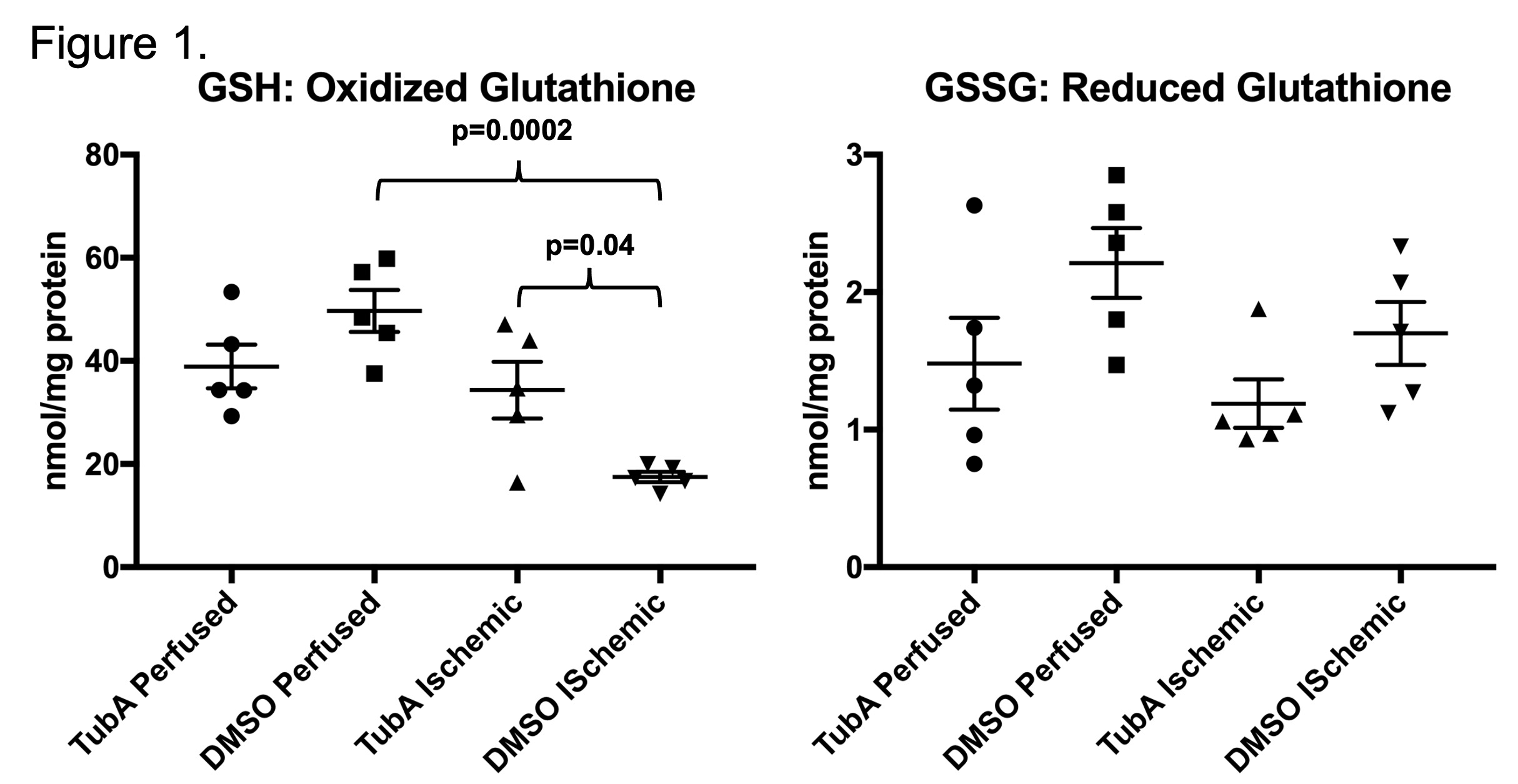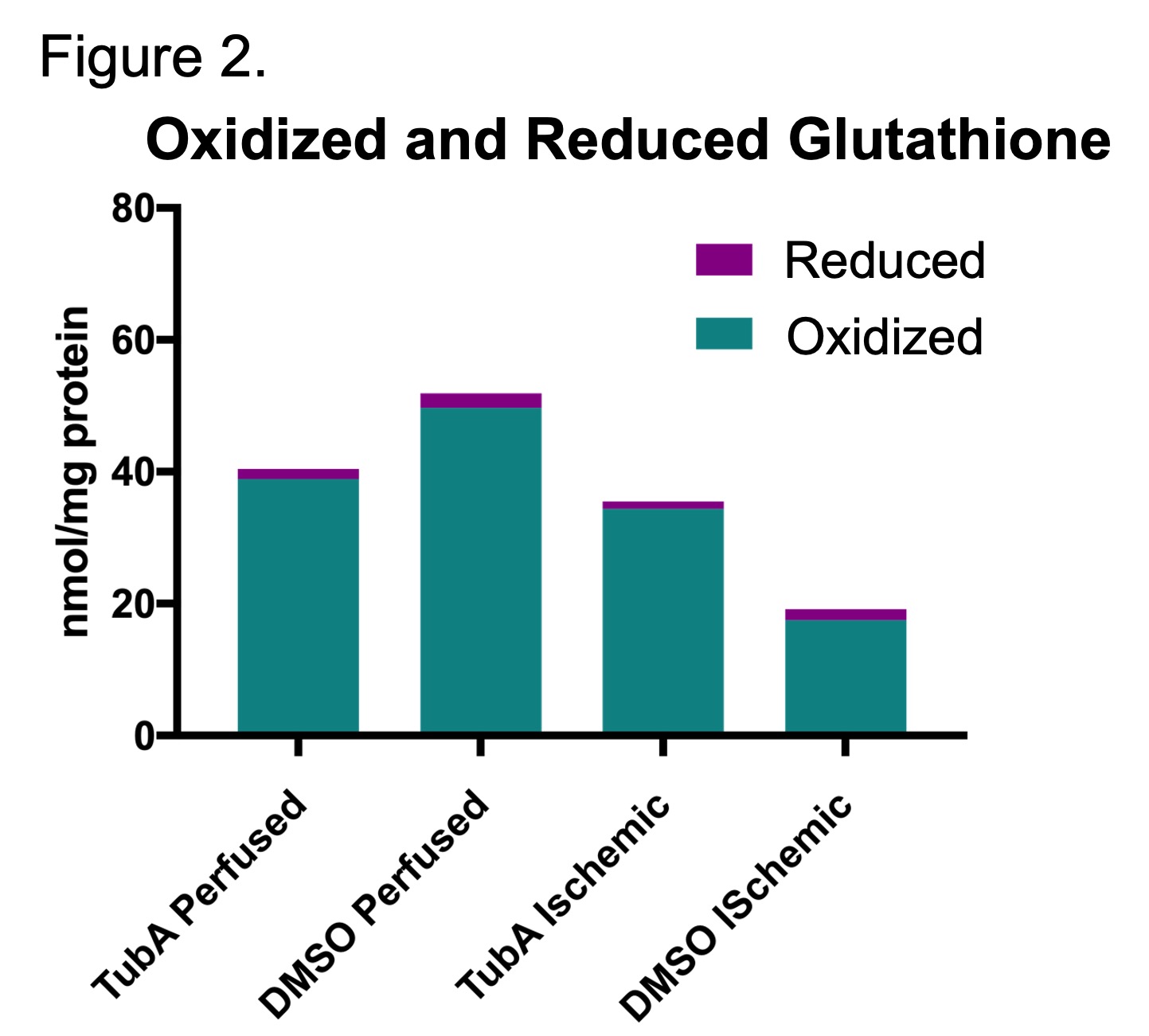HDAC6 Inhibition Mediated Protection from Hepatic Ischemia Reperfusion is Associated with Preserved Glutathione Levels
1Surgery, University of Pennsylvania, Philadelphia, PA, 2University of Pennsylvania, Philadelphia, PA, 3Surgery, University of Pensylvania, Philadelphia, PA, 4College of Pharmacy, University of Illinois at Chicago, Chicago, IL, 5Childrens Hospital of Philadelphia, Philadelphia, PA
Meeting: 2022 American Transplant Congress
Abstract number: 664
Keywords: Glutathione, Ischemia, Liver preservation
Topic: Basic Science » Basic Science » 14 - Ischemia Reperfusion
Session Information
Session Time: 5:30pm-7:00pm
 Presentation Time: 5:30pm-7:00pm
Presentation Time: 5:30pm-7:00pm
Location: Hynes Halls C & D
*Purpose: Liver Ischemia reperfusion injury (IRI) and Acetaminophen (APAP) toxicity are important causes of acute liver failure in the United States, that lack effective therapy. Histone deacetylases (HDACs) are enzymes that alter gene expression, regulating diverse cellular processes. We have previously shown that Tubastatin-A (TubA), an HDAC6 inhibitor, provides protection from hepatic IRI and APAP toxicity. Previously we have reported that Tub-A mediated protection from APAP toxicity is associated with a remarkable preservation of hepatic glutathione levels. We now report that the protective effect of TubA in liver ischemia is also associated with preserved levels of hepatic glutathione.
*Methods: Female C57BL/6 mice were treated with vehicle (DMSO) or TubA, at 16 hours and one hour prior to 60 minutes of warm IRI. Warm ischemia was achieved by selective clamping of the portal triad to 60% of the liver. 48 hours after ischemia, liver tissue from both ischemic and perfused segments was harvested and oxidized and reduced glutathione was measured with LC-MS and normalized to total hepatic protein.
*Results: Animals treated with the vehicle showed a significant decrease in oxidized glutathione levels in the ischemic liver (p=0.002, Fig 1). Tub-A treated animals showed no difference in oxidized glutathione levels between ischemic and perfused liver. There were no significant differences in reduced glutathione with either ischemia or Tub-A treatment (Fig 1), and there was no major shift in the ratio of oxidized to reduced glutathione (Fig 2).
*Conclusions: These findings further establish the protection that is seen with Tub-A treatment in liver ischemia reperfusion. Moreover, the preservation of glutathione levels, despite previously demonstrated hepatocellular injury, suggests that Tub-A is working via a metabolic pathway to prevent progression of liver injury after ischemia.
To cite this abstract in AMA style:
OBrien C, Hernandez P, Concors S, Wang Z, Ge G, Kozikowski A, Hancock W, Levine M. HDAC6 Inhibition Mediated Protection from Hepatic Ischemia Reperfusion is Associated with Preserved Glutathione Levels [abstract]. Am J Transplant. 2022; 22 (suppl 3). https://atcmeetingabstracts.com/abstract/hdac6-inhibition-mediated-protection-from-hepatic-ischemia-reperfusion-is-associated-with-preserved-glutathione-levels/. Accessed December 19, 2025.« Back to 2022 American Transplant Congress


